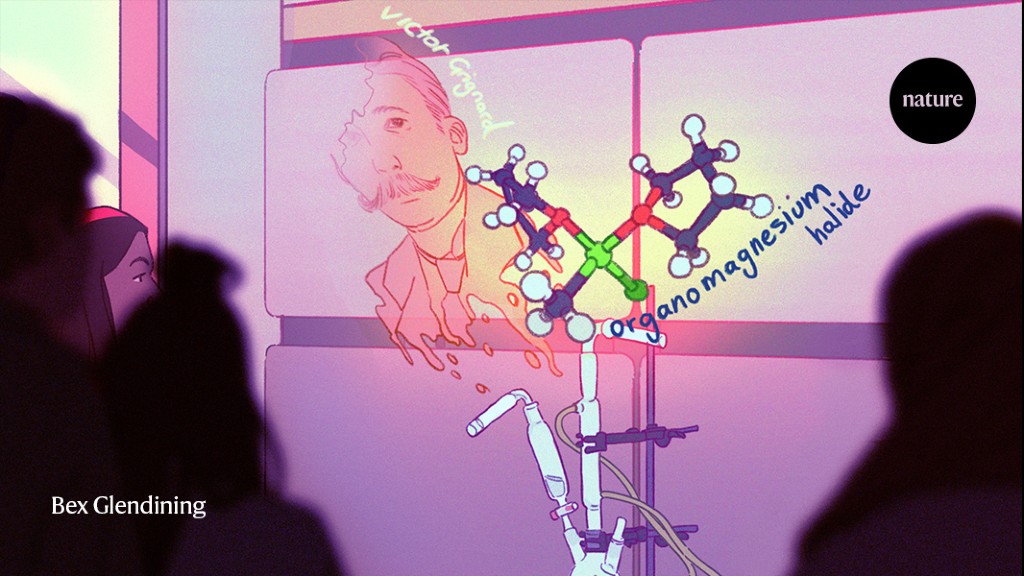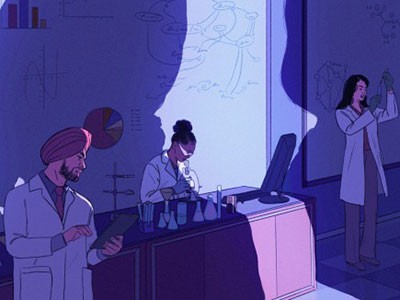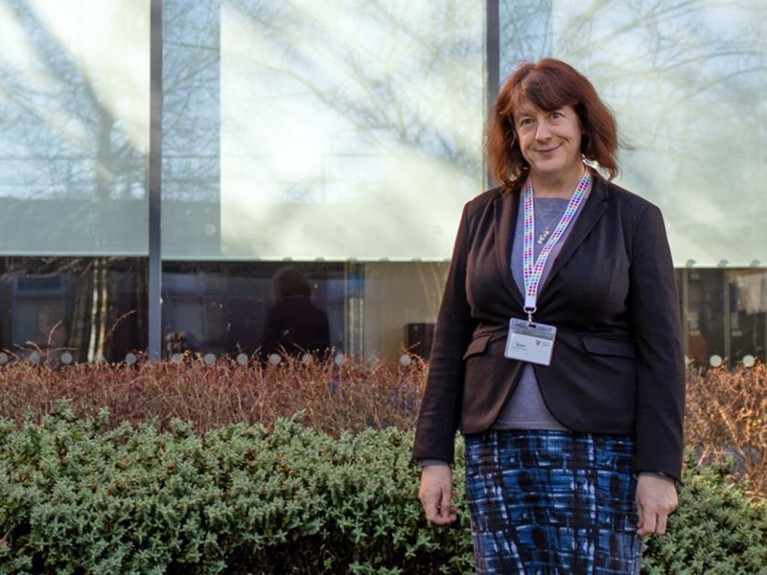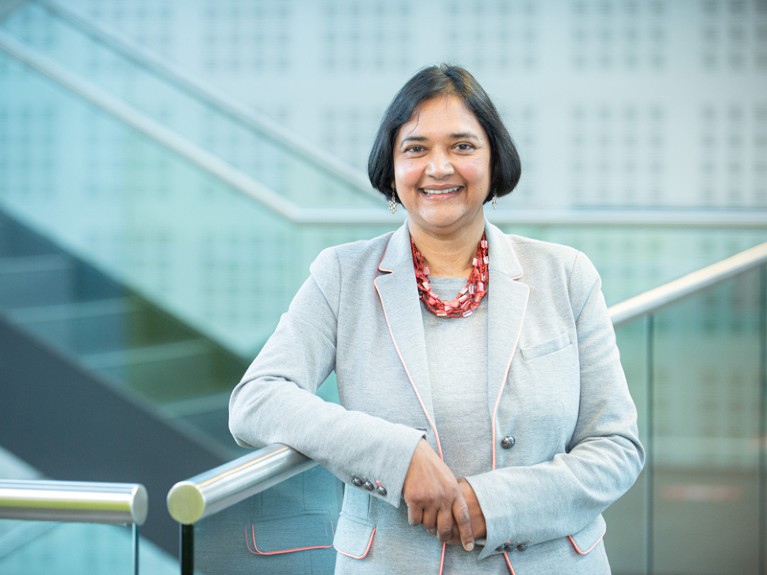Flick through a chemistry textbook at school or university, and you’d be forgiven for thinking that chemistry — touted as the central science that connects all other physical-science fields — is the domain of almost exclusively white men. Yet chemistry has origins going back millennia — such as in the papyrus-making procedures of ancient Egyptians, Chinese medicine and distillation methods developed in early Arab cultures. Contributions to modern chemistry are truly global, meaning that low- and middle-income countries can take advantage of chemical advances in areas such as agriculture and medicine as they seek to develop their economies.
To better reflect this breadth, chemistry departments across the globe need to revamp curricula, say those who are pushing for change. It must and will happen, says Avtar Matharu, director of the master’s course in green chemistry at the University of York, UK. Matharu, who is Sikh, was born in Nairobi and moved to the United Kingdom as a child. He is also vice-chair of the university’s staff race equality forum. “Universities are institutionally racist,” he says, but adds that calls for change are too strong for institutions to ignore. “Every university has to respond to the issue,” Matharu says.
At the University of York, the chemistry department is an early adopter of a decolonizing agenda and is already known for its progressive stance on inclusion and diversity. This includes LGBT+ friendly policies that take into account the needs of people from sexual and gender minorities; diversity and inclusion training for all undergraduate and postgraduate students; and unconscious-bias training for all recruitment panels. In 2007, it was the first department to achieve a gold Athena Swan award, the highest honour of the UK-wide programme, which recognizes significant gender-equity efforts in the sciences.
In 2019, York students from a variety of disciplines started to urge senior faculty members to decolonize their curricula. This means ensuring that there is a diverse community in departments, that course materials encompass sources from all parts of society and the world, and that courses reflect the lived experience of the diverse student body. In the academic year 2012–13, 21% of York students identified as Black and minority ethnic, rising to 38% in 2022–23.
Decolonizing science toolkit
Within a few months, students on chemistry courses saw that progress was being made in the humanities, but less so in science. So they called on the head of chemistry, Caroline Dessent, to act. She says that the chemistry students’ call for action came when the department had already begun to think about how it could address racism and race-related discrimination at all levels. “There was also already quite a desire to do something to improve the culture in the department” for the minority ethnic students and staff, says Dessent, who is white.
In the city of York, 93% of residents are white, according to 2021 census data. “The environment is not very diversified,” says Kelechi Uleanya, a postdoctoral research associate in Dessent’s research group. Uleanya hails from Nigeria, where she completed her undergraduate and master’s studies in chemistry. When she was working as a graduate teaching assistant (GTA) in the undergraduate laboratories at York, she noticed that other GTAs could have benefited from some training in how cultures take different approaches to practical work.
“Some [GTAs] might not have had serious contact with people of different cultures” and therefore lack context about why students might engage in problem sets or labs in different ways, she says. “So, for some of them it’s a shock meeting [students from different cultures] in the labs and their approach to things is totally different because they are coming from another setting.”
Caroline Dessent is head of chemistry at the University of York, UK, and has shaped efforts to decolonize the department’s curriculum in response to student calls for action.Credit: Suzy Harrison
Uleanya joined a steering group, made up of staff and students, that Dessent started in 2020 in response to students’ concerns.
Dessent then wrote to all staff members setting out the decolonizing aims. “It is extremely important when you do equality, diversity and inclusion work that you explain why you’re doing it, because otherwise you’re always at risk of people trying to criticize it,” she says. “Decolonizing is one of those things that currently does attract a certain amount of negative publicity. Maybe because people just don’t understand what they’re trying to achieve through it. It’s really something very pragmatic.”
Distilling lessons
In her newsletter to staff, Dessent laid out why the department was embarking on this course of action. Nationally, there is a 16.1% gap between the number of highest-honours degrees awarded to white UK students compared with Black and minority ethnic UK students, according to 2011 data from the UK National Union of Students (NUS), and this attainment gap is also present at York. Dessent noted that, in the NUS survey, 42% of Black students say that the curriculum does not reflect issues of diversity, equality and discrimination. Ten per cent of transgender students and nearly 25% of women never feel comfortable to speak up in class. “Our undergraduate courses should not disadvantage any student because of their background or characteristics. All of our students should have equal opportunities to thrive in our department,” she wrote.
Steps towards achieving this include changing the taught material to be more reflective of contributions from scientists other than those who are white and male, but it also means working to change the culture in the department, she says.
Dessent asked all of her department’s faculty members to scrutinize the courses they were currently teaching and find places to introduce some context that would help to diversify the curriculum. For instance, in a course on colloid chemistry that discusses the applications of micelles and gels in cleaning and lubrication, a lecturer incorporated how ancient Babylonians produced one of the first known lubricating gels used as chariot axle grease. In a medicinal chemistry course that covers a global history of medicine, instructors included examples from China, India, the Arab world and Indigenous Australian cultures.
Avtar Matharu helps students identify biases.Credit: Christina Surdhar
Faculty members were also encouraged to include the work of individual non-Western chemists. For example, the medicinal chemistry course highlights the Chinese scientist Tu Youyou, who was the first scientist working in China to receive the Nobel Prize in Physiology or Medicine. She developed the antimalarial drug artemisinin by using her knowledge of traditional Chinese medicine and combining it with modern drug-discovery techniques. “Youyou isolated the active ingredient and did all the medicinal development from that traditional herbal drug to turn it into a pharmaceutical drug,” says David Smith, who is white British and a prominent advocate for equity, diversity and inclusion in York’s chemistry department. He points out that, ironically, the production of that drug “is now controlled by Western companies, and still isn’t available in sub-Saharan Africa”, where it is most needed to combat malaria. Teaching this context as part of a pure chemistry course adds a globalized aspect to the curriculum that shows students how chemistry intersects with traditional knowledge, culture and politics, he says.
These examples, along with many others, have been collated into an evolving document by Uleanya and her colleagues (O. K. Uleanya et al. Preprint at ChemRxiv https://doi.org/jzfb; 2022).
How to shrink the gap that holds Black scientists back
Uleanya has been compiling and annotating the resource since October 2021 with funding from the Royal Society of Chemistry in London. “It’s a detailed resource that anybody can go and pull examples from” for teaching high-school or university-level courses, Uleanya explains. When she joined York in August 2016, she was pleased that the department had a reputation for being engaged in equity, diversity and inclusion work, but she still wanted to find more role models. She began to take a deeper look at the literature and found that there were chemists making important discoveries from other countries and other cultures. “People like me contributed a lot,” she says.
And yet in chemistry, lots of the reactions that students learn are named after the often-white male chemist who is credited with discovering or developing them. “There is no need for the name of a reaction to reflect a person,” says Smith. Instead, those reactions can be taught by their reactivity — what actually happens if that kind of reaction is performed on a certain kind of molecule. For example, the Grignard reaction, which is used in the formation of carbon–carbon bonds, is named after French chemist Victor Grignard. The reaction starts by making a Grignard reagent, a molecule containing a halogen, a magnesium atom and an organic group, which could more descriptively be called an organomagnesium halide, Smith says.
For many students, this is likely to make more sense — removing the need to simply memorize names and instead think more deeply about the chemistry that the reactions exemplify. “Very often, by decolonizing the name you can make things clearer,” says Smith. But wholesale rewriting and reprinting of textbooks, as well as adopting a different name for a historically well-known procedure, is likely to be a slow process, he adds.
Smith emphasizes that the department isn’t trying to dictate to lecturers what they must include in their teaching material. Instead, “it has been a bit more about role modelling the contexts of chemistry”, he says. For instance, lecturers could use examples of chemistry that solves a problem in low-income countries, or of science done by researchers outside the countries that conventionally dominate the literature, he suggests.
Charting prejudices
Matharu isn’t convinced that this kind of collation exercise is ambitious enough. “The easiest thing to do is find lots of examples in the literature for minority ethnic researchers,” he says, but describes this approach as too simple. If a student had a follow-up question, and the teacher or lecturer had included the example as a box-ticking exercise, then the instructor would probably have no further context to add. Matharu has developed his own teaching methods that lead students to realize for themselves how implicitly biased science and the scientific literature are. “I was very keen that we need to start the conversation,” he says.
Ecologists should create space for a wide range of expertise
For example, Matharu introduced a section in written essays, in which students have to look up the country and institution of the corresponding authors on all the papers they cite and construct a bar chart. Inevitably, these plots are dominated by US, EU and UK researchers. He first introduced this after marking a student project on coffee production, which predominantly happens in the global south. Matharu totted up the countries of the corresponding authors and realized that there were hardly any from the countries where coffee is actually produced. Now, for all the projects in his postgraduate course on green chemistry, the students must write a narrative about the trend they see in cited authorship.
“That’s really eye-opening,” says Matharu. “When they start to write their narrative, or even see the plot, the plot should already encourage them that their literature is biased.” Matharu now gives points, which count towards a student’s final degree mark, for completing this exercise. “It’s not something that’s too onerous,” he says, “but it’s something that starts to change their behaviour; it gets them to think.”
One student, he says, wrote that the review made them think about the origin of the papers on a deeper level. “That’s quite a profound statement,” he says. “For that particular student, I changed their mindset and changed their way of thinking.” He has dubbed the authorship charts ‘Matharu plots’.
Arinzechukwu Ngoka, who is Black and studied chemistry as an undergraduate in his home country of Nigeria, came to York to pursue the green chemistry master’s course. Ngoka says that the graphs are really easy to compile, but that the results are stark. “Matharu plots are an eye-opener to my open bias of Western literatures. I was used to the traditional and biased system thinking that the white scientists dominated the educational system,” he says, adding that he now searches for papers from a more diverse range of authors than he did previously.
Matharu hopes that other institutions will take on his idea, and he has presented it to the Royal Society of Chemistry and to some major publishers, he says.
Nazira Karodia calls racism’s negative effects on higher education “pervasive” for students.Credit: Edinburgh Napier University
York doesn’t stand alone in its decolonization efforts. In her previous roles as pro-vice chancellor with responsibility for regional engagement and as a science-education professor at the University of Wolverhampton, UK, Nazira Karodia led a range of decolonizing and diversity and inclusion programmes in science and technology. Now deputy vice-chancellor at Edinburgh Napier University, UK, Karodia grew up during the apartheid period of systemic, nationalized racial discrimination in South Africa. “I have had first-hand experience of racism in South African education and society and have seen the pervasive negative influence of racism in higher education in England — a racism that affects so many students’ study, lives, expectations and futures,” says Karodia.
Karodia says that maintaining a dialogue with stakeholders is key to implementing a successful decolonizing agenda. Students seem to accept change more readily, in her experience, but “staff need to be persuaded, sometimes, by rational argument and an appeal to the values of the liberal institutions. Some staff will never be convinced, and we have to live with that too”, she says.
Uleanya has showcased her chemistry-decolonization resource at a number of conferences on equity, diversity and inclusion in science, and interest has been high, she says. A common concern that she hears is that decolonizing the curriculum means a loss of quality. Her advice is to start slowly, including a few new examples. “It has nothing to do with losing the chemistry we have,” she says, but rather about including things to make chemistry more global. “Where everybody can feel a sense of belonging. And then to build better chemists.”











More News
Accurate structure prediction of biomolecular interactions with AlphaFold 3 – Nature
Elastic films of single-crystal two-dimensional covalent organic frameworks – Nature
Publisher Correction: High carrier mobility along the [111] orientation in Cu2O photoelectrodes – Nature